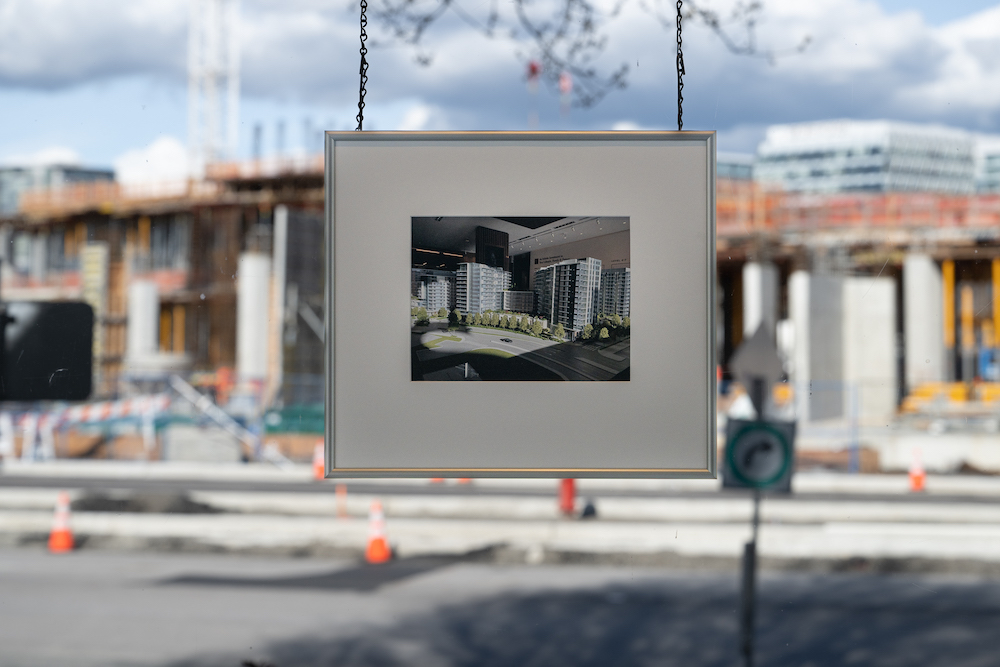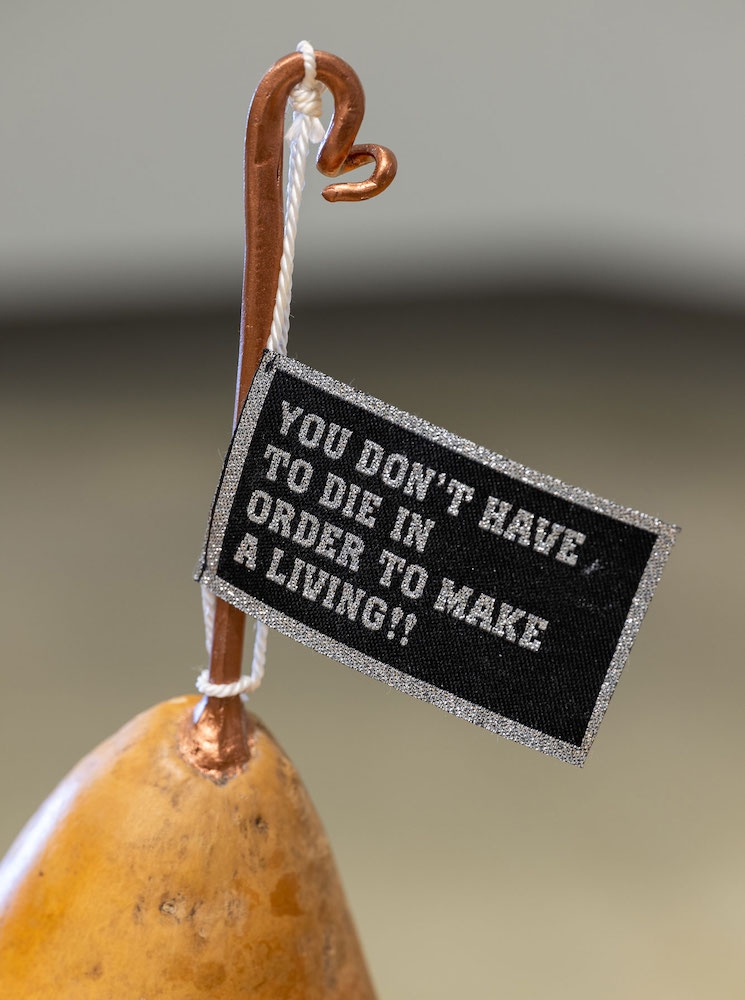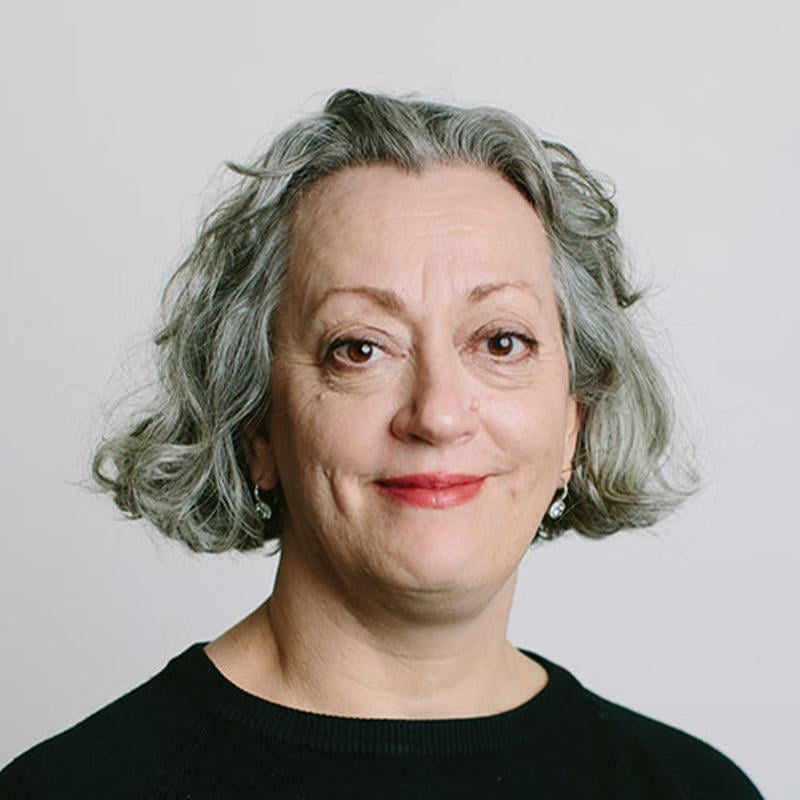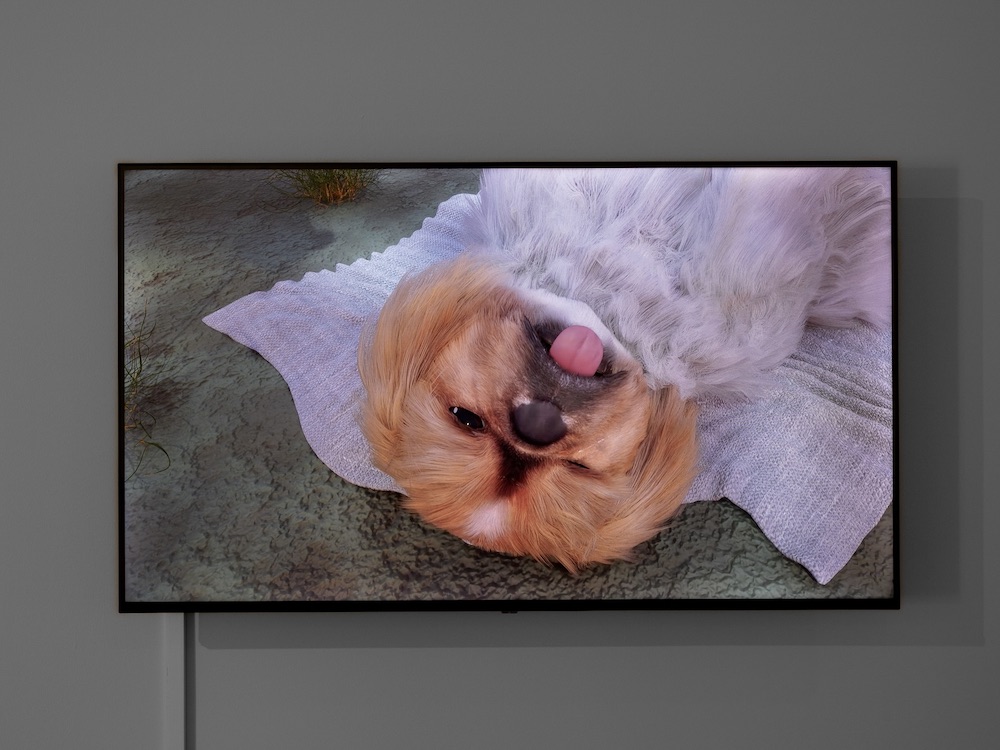When artist Amy Ching-Yan Lam’s parents were packing up the family home in Calgary, Lam’s mother came upon a time capsule that her daughter had made when she was in elementary school.
A Small but Comfy House and Maybe a Dog takes its title from what 11-year-old Lam thought her adult life might offer. But the stuff of what used to constitute the badges of adulthood — a home, a pet, a settled and comfortable life — isn’t what it used to be. The time capsule and all that it carried became the catalyst for Lam’s first-ever solo exhibition at the Richmond Art Gallery.
There is a lot packed into the show — feng shui, couches, actually a lot of couches, real estate, both real and unreal, sundials, slightly unnerving animation and Pekingese dogs.
If the mutable and changing pace of memory and home is the subtext of the exhibition, it extends far beyond the objects and installations. The barest glance out the window of the Richmond Art Gallery provides an indication that development on an almost metastatic level has changed not only the physical landscape but also the economic one. Houses are increasingly investments, temporary repositories for money. And dogs? Well, they’re still dogs.
Guest curator Su-Ying Lee explains in the material introducing the show that by age 25, Lam assumed that all the markers of adult life would have duly arrived: “Starting from these childhood fantasies of domestic love and financial stability, Lam presents artworks that explore how these dreams have been indirectly influenced by the wider trajectory of colonial history.
“With humour and acuity, she examines the complicated relationships between institutional collections and power, property and theft, and history and family.”

The shifting relationship between art and the outside world
Born in Hong Kong, Lam mostly grew up in Calgary. Although she is currently based in Toronto, Lam made multiple trips to Richmond, B.C., watching the scale of development spring up alongside its art gallery.
In one image in the show, marketing material for new condominiums completely erased the Richmond Cultural Centre, the physical site of the Richmond Art Gallery, in its entirety.
By incorporating the scale of development into the exhibition itself, Lam has done something interesting. She renders the dynamic between art and the outside world as one of constant renegotiation and reassessment. Arguably every time one sees the show, it will be slightly different as the buildings climb ever higher.
Lam’s artwork is joined by HaeAhn Woo Kwon, who contributed sculptural objects. Some of these defy easy description, such as a giant flip-flop sandal resting atop a pile of sand, studded round with shards of broken glass. It’s simultaneously funny, disturbing and more than a little absurdist, a trifecta that runs through much of the show.
Humour is not often something you see in contemporary art, and there is a joyous abundance of it here. It’s visible in the daily calendars that Lam kept making note of whenever anyone mentioned anything to do with housing or real estate (suffice to say: it’s a lot). And very much in the presence of Looty. A Pekingese dog purloined by British forces at the end of the Second Opium War, Looty was gifted to Queen Victoria. She promptly renamed the dog after how it was procured. Maybe a name like “I stole this dog” was too clunky?
The Looty material in the show is complicated. It isn’t as straightforward as a full-blown takedown of colonialist thievery, although that is certainly there. What’s more interesting is the other potential reality that Looty presents in the exhibition. This alternative version of history is suggested by the book that accompanies the show, as well as in an animated film loop of Looty, lolling about, tongue out, looking fashionably deshabille.
The animated film and book, created with Emerson Maxwell, share the same title: Looty Goes to Heaven, 2022. The book-length form, offered in both English and traditional Chinese, imagines another story for Looty. In this other world, she is given voice and agency, finally freed from her English captors, and spirals up to heaven.
The one photograph of the real-life Looty, slumped in a chair looking as forlorn as possible, provides an entrée not only into the history of British imperialism and its rampaging ways, but the ongoing repercussions of the take-anything-that-isn’t-nailed-down modus operandi of colonialist rule.
In the process of putting the show together, Lam wrote to the Royal Collection Trust, requesting permission to include a painting of Looty in the show. A copy of the rejection letter that she received from the Royal Collection denying the request is blown up to poster size and is featured in the show.
As the piece entitled Rejection Letter, 2022 makes clear, it’s very hard to get stuff out the hands of the royal family. Not much has changed in terms of the how things are taken and never returned.
As if in a riposte to this institutional greediness, Lam shoplifted a USB key in the shape of the Rosetta Stone from the souvenir store at the British Museum. As Lam explains, the best way to shoplift is to also buy something at the same time. She bought one USB key and stole the other. This is more than fitting, given what the Rosetta Stone actually represents.
As the attendant material explains: “The Rosetta Stone is one of the most famous objects in the British Museum’s collection, and is well-known for providing a key to Egyptian hieroglyphics, with text in both Greek and Egyptian. However, the original use of the stone was to announce a mass amnesty, for both debtors and prisoners, in 196 BCE. This means that both financial debts and criminal sentences were forgiven; everybody had access to a fresh start.”
Dreams with a dark edge
The good-natured and very funny aspects of the exhibition run riot throughout. Especially in the surreal sculptures, co-created by Lam and Kwon that incorporate old toys, teapots, fountains, gourds, all seemingly put through a funhouse mirror, so that they pop out on the other side, becoming a curious fantasia of the deeply familiar and the distinctly odd.
But here is where things also begin to deepen and darken.

Every child, at one point or another, has drawn a version of their fantasy house from the future, complete with a bowling alley, a movie theatre, a swimming pool, maybe a couple of different pools. There are echoes of this particular convention in the show, coupled with the emotional qualities that nostalgia stirs up at a certain point in life, when old things transform from cute to mournful. It is within this interstitial territory, an emotional no-man’s-land that floats between crepuscular sadness to more silly stuff, that the meat of the show takes place.
This quality is especially evident in another missive from the past. A student newspaper, created when Lam was in grade school, predicts the future from a different perspective. The young artist wrote a column that declared that women will have completely taken over and rule the European continent. The boys in Lam’s class were more concerned with who would take over from David Letterman on late-night television. So, maybe some things haven’t changed at all.
In addition to objects, couches, toys and sundry objects from the artist’s childhood home, melded into new creations, the show features different artworks from the Richmond Art Gallery’s permanent collection as well as objects from and the Richmond Public Library. And that is only the barest dip of the toe into the show.
Feng shui expert Sherman Tai contributed his skills to the exhibition, suggesting that a fountain just inside the entrance would attract people into the space. Given that there is pillar directly in front of the front doors of the gallery, this can only help. But the fountain itself isn’t exactly straightforward. Turn on the water and it jets out into a wastebasket placed directly in front. It’s this mixture of familiar and weird, discombobulating, so that nothing feels certain or reliable any longer.
And that’s largely what adult life feels like now. All the usual guideposts and signs aren’t what they used to be. In this new territory, the hopes and dreams of the past linger like sad and broken toys.
‘A Small but Comfy House and Maybe a Dog’ is on view at the Richmond Art Gallery to June 11. ![]()
Read more: Art, Urban Planning

















Tyee Commenting Guidelines
Comments that violate guidelines risk being deleted, and violations may result in a temporary or permanent user ban. Maintain the spirit of good conversation to stay in the discussion and be patient with moderators. Comments are reviewed regularly but not in real time.
Do:
Do not: